December 2007
 View Full Print Edition
View Full Print EditionBusiness Briefs
Columns
EERC Update
By Bruce Folkedahl
Editor's Note
By Tom Bryan
NBB In Sight
By Joe Jobe
Talking Point
By Jake Stewart
Featured
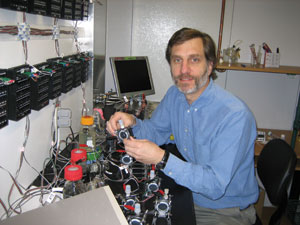
Fortifying Fuel Cell Technology
By Jessica Ebert
Scientists have known for nearly a century that certain bacteria can convert organic material into electricity. Only recently though, have microbiologists and engineers worked to exploit this phenomenon in the development of microbial fuel cells for powering environmental monitoring devices and treating wastewater.
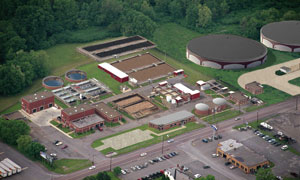
The Power of High-Strength H2O
By Ron Kotrba
The future of wastewater treatment is being designed in Pennsylvania, where the Milton Regional Sewer Authority's plant plans to upgrade its antiquated aerobic water treatment process. The technologies penciled into this design of tomorrow aren't new, but the designers are billing it as the world's first wastewater-to-energy project.

Taming the Wild Cuphea
By Susanne Retka Schill
Cuphea has been in development as an industrial crop for a number of years. Once the oilseed reaches commercial viability it could replace imported oils and petroleum as a source for capric and lauric acids used in the production of manufacturing surfactants, detergents, lubricants, personal care products and other specialty chemicals.
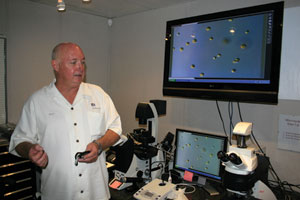
Biomass in a Tube
By Jerry W. Kram
Biomass will play an increasing role in filling the world's demand for energy and chemicals. Producing enough biomass will take land and lots of it. As Will Rogers said when advising people to buy land, "They ain't making more of the stuff." Harvesting more biomass per acre for food and fuel to feed and run a growing world population is the key, and microscopic algae may be a major player.

Adding Value to Wheat Straw
By Anduin Kirkbride McElroy
Wyoming-based Heartland BioComposites LLC makes composite fencing from wheat straw and recyclable plastic. Though the manufacturing facility is located in an arid region of the country biomass sourcing has been easy.
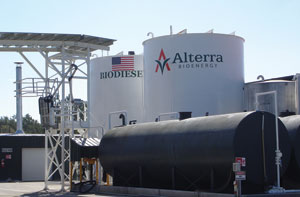
Divided We Fall
By Ron Kotrba
Those fighting for one renewable fuel may be wasting energy and creating a no-win situation. Representatives from all sides of the renewable diesel issue speak with Biodiesel Magazine about perceptions shaping the future coexistence of alternative diesel fuels.
The Bigger, the Better?
By Jessica Ebert
According to Biodiesel Magazine's plant construction list, 148 biodiesel plants are operating in the United States with an annual capacity of 1.75 billion gallons per year. The plants produce an average 11.8 MMgy. In contrast, the average size of the 28 plants under construction and three existing plants being expanded is 26 MMgy. As feedstock prices rise, will a trend toward bigger plants continue?

Feedstock Frenzy
By Susanne Retka Schill and Jerry W. Kram
Jatropha and algae show promise as alternative biodiesel feedstocks because they don't compete with crop acres and are purportedly high yielding. The "gold rush" mentality developing around them raises questions about when and if they will be ready for commercial production.

Industry Pins Hopes on Policy
By Anduin Kirkbride McElroy
In 2007, the biodiesel industry identified policy as the key to industry longevity. After months of lobbying and still no resolution from Congress on the Energy Bill and the Farm Bill, the industry will likely need to maintain its focus on policy.
Biodiesel: A Global Perspective
By Bryan Sims
In 2007, Europe and the United States were the leading biodiesel producers. Heading into 2008, Biodiesel Magazine takes a look at which countries are struggling and which show potential.
Research Reveals New Biofuels Link
By Anduin Kirkbride McElroy
Crude glycerin is a low-value byproduct of the growing biodiesel industry. But one company, Glycos Biotechnologies Inc., sees potential for the product as a feedstock for ethanol production.

Biofuels on the Hill
By Jessica Sobolik
U.S. Sen. Byron Dorgan, D-N.D., is part of a growing group in Congress that is interested in and excited about the potential benefits of renewable fuels in the United States. Here, he shares some of his ideas and plans with Biodiesel Magazine.
Contributions
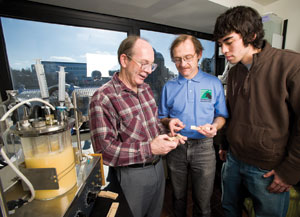
Breaking Down Walls
By Erin K. Peabody
Basic research on plant cell walls promises to boost not only dairy efficiency, but biofuels production as well. USDA Agricultural Research Service scientists may be on the edge of a breakthrough.



